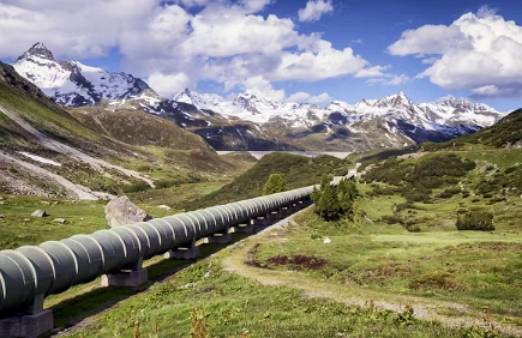The Indian conglomerate Tata, owner of British car company Jaguar Land Rover, is nearing the completion of a deal to establish a high-value electric vehicle (EV) battery facility in the UK, with investments in the range of billions of pounds.
The emergence of hydrogen-fuel vehicles and infrastructure alongside electric vehicles (EVs) in the UK car industry could lead to a transformative shift. By establishing a hydrogen economy, manufacturers have the potential to offer fuel costs that are lower than the current prices of petrol and diesel. This presents an exciting opportunity to drive the industry into a new era of sustainable transportation.
In response to shifting global demands, British car manufacturers are striving to adapt and embrace new trends. The International Energy Agency estimates that in order to achieve net zero emissions by 2050, over 300 million electric vehicles will be needed by 2030. This projection highlights the urgent need for the automotive industry to focus on electric vehicle production to contribute towards a sustainable future.
If we consider an average battery size of 60 kilowatt hours, which is equivalent to the current capacity of a standard Tesla Model 3, powering the projected 300 million electric vehicles by 2050 would require a staggering 18 million megawatt hours of energy. To put this into perspective, this amount of energy consumption would utilize almost 10% of the world’s known lithium resources. This highlights the significant challenge of meeting the escalating demand for lithium in the coming decades.
However, the extensive mining required to meet this demand, coupled with the limited rate of mineral recycling from electric vehicle (EV) batteries (currently at 5% for lithium), and the strain it would put on electricity grids to power these vehicles, present significant challenges to achieving a complete transition to EVs by 2050.
This is why it is important to foster the development of hydrogen-powered vehicles in parallel with electric vehicles (EVs) in the UK. Hydrogen vehicles operate using two different technologies: hydrogen combustion engines, which burn hydrogen, a zero-carbon fuel, in a manner similar to how gasoline engines burn petrol.
On the other hand, there are also hydrogen fuel cell vehicles (HFCVs) that operate using a different technology. These vehicles generate electricity from hydrogen through a device called a fuel cell. HFCVs offer advantages such as longer driving range and faster refueling compared to EVs, making them a practical choice for long-distance travel and particularly suitable for heavy-duty vehicles like lorries.
However, the construction and operation of hydrogen refueling stations can be expensive. The costs range from US$1.5 million to US$2.5 million, which is significantly higher compared to the cost of an EV fast-charging station, which ranges from US$75,000 to US$150,000. Furthermore, the estimated annual operating costs for a renewable electrolysis hydrogen refueling station are between US$30 and US$35 per kilowatt (kW), whereas an EV charging station typically incurs costs of US$2 to US$6 per kW.
As of March 2023, the limited number of public hydrogen refueling stations in the UK, with only 11 stations available, pales in comparison to the extensive network of over 57,000 public EV charging points. This stark contrast is likely due to the higher costs associated with building and operating hydrogen refueling stations. Consequently, under the existing conditions, it is projected that only a minuscule fraction, 0.01%, of cars will be powered by hydrogen by the year 2050.
However, research indicates that hydrogen could play a crucial role in decarbonizing long-distance transportation, particularly for heavy vehicles. This could serve as a starting point for the development of a hydrogen economy in the UK, where hydrogen is utilized as a clean energy source across various sectors.
Building a hydrogen economy

That blue hydrogen, which is produced from natural gas with carbon capture and storage, can currently be priced at US$2,41 to US$3,55 per kilogram, with a high level of carbon capture achieved.
With the ongoing decline in renewable energy costs and advancements in electrolysis and seawater desalination techniques for producing carbon-neutral hydrogen, it is anticipated that the price of hydrogen could further decrease by 2050. In regions such as Chile and the Middle East, the price could potentially drop below US$1.00 per kilogram, while in Europe, it is projected to range from US$1.80 to US$2.50 per kilogram. The variations in costs among countries can be attributed to variances in electricity prices for solar or other clean energy generation.
Currently, one kilogram of hydrogen holds approximately the same energy content as a US gallon or 3.8 liters of petrol (slightly less than one gallon of diesel fuel). As a result, the cost of hydrogen has the potential to become significantly cheaper compared to petrol or diesel fuel. Presently, petrol and diesel fuel are priced at around US$6,84 and US$7,34 per 3.8 liters respectively in the UK.
In order to attain these reduced prices, establishing a hydrogen economy in the UK would necessitate technological advancements, optimization of the supply chain, and the realization of economies of scale to drive down costs. Various companies, such as BP, are already making investments to support this vision. Additionally, prominent automakers like Toyota, Hyundai, and Honda, among the 13 founding members of the Hydrogen Council established in 2017, are actively exploring and investing in hydrogen as a low-carbon technology.
According to the Hydrogen Council, there are currently 1,040 projects with a combined direct investment of US$320 billion that are expected to be completed between now and 2030. However, the council emphasizes that this number needs to increase by over 20 times by 2030 in order to achieve the current net-zero objectives.
H2 Green and Element 2, two hydrogen developers, have ambitious plans to establish a comprehensive network of 800 hydrogen refuelling stations across the UK by 2027, with a further expansion to 2000 stations by 2030. Initially focused on HGVs, these stations would also be accessible for cars. By leveraging the existing hydrogen infrastructure for heavy goods vehicles, other industries such as public transportation, shipping, and industrial applications could also benefit from the infrastructure. Eventually, even cars could join in, making hydrogen a versatile and widespread energy source.
Ongoing research and advancements in the hydrogen supply chain are providing promising indications for a more promising future for hydrogen-fueled vehicles. These developments are contributing to the reduction in the cost of hydrogen as a fuel. Should this trend continue, hydrogen has the potential to become a significant contender in global energy markets by the year 2050.
The widespread adoption of hydrogen as a global energy source would necessitate efficient transportation methods. Retrofitting existing pipelines for hydrogen export is often a more feasible option than constructing new pipelines in many regions. This approach can significantly reduce investment costs by more than 65%. Furthermore, advancements in technology are aiding exporters in improving the storage and transportation of hydrogen using barges, rail, and trucks. These innovations enhance the overall viability and flexibility of hydrogen transportation.
Undoubtedly, the production of hydrogen fuel cells still relies on extensive mining of nickel and cobalt, similar to the requirements for EV batteries. Therefore, pursuing the development of both electric vehicles (EVs) and hydrogen-powered vehicles, along with the corresponding infrastructure, would be a logical approach. By embracing this dual strategy, countries like the UK can bolster their ability to achieve a successful transition to a net-zero emissions future. Such a comprehensive approach would ensure a more sustainable and diversified transportation sector, reducing reliance on a single technology and minimizing the environmental impact of mineral extraction.
Regulators and businesses
Over the coming decades, the UK government’s hydrogen strategy for transportation places a greater emphasis on sectors such as rail, aviation, and freight transport, particularly heavy goods vehicles (HGVs) and trucks, rather than passenger cars. The deployment of hydrogen-powered heavy trucks will rely on a targeted network of refuelling stations, which can be supported by local production sources, rather than relying solely on public refuelling infrastructure. This approach ensures that the necessary refuelling infrastructure is strategically located to meet the demands of heavy-duty transport while minimizing the overall impact on public refuelling networks.
The UK government is providing significant support to foster the development of a thriving hydrogen economy. Through its 2021 plan for a world-leading hydrogen economy, the government aims to generate over 9,000 new jobs in the UK and catalyze US$5,07 billion in hydrogen-related investments by 2030. This comprehensive plan underscores the government’s commitment to promoting hydrogen as a key driver of economic growth and sustainability in the coming decade.
To fully unleash the potential of hydrogen, it is crucial to establish a supportive policy framework that encourages investment, drives demand, fosters technological advancements, and facilitates infrastructure accessibility. The UK can play a pivotal role in this by concurrently developing a hydrogen economy alongside the advancement of electric vehicles (EVs). By doing so, the UK can harness the complete benefits of hydrogen as an alternative fuel source, paving the way for a sustainable and prosperous future. This approach will not only accelerate the transition to cleaner transportation but also contribute to the overall decarbonization goals of the country.



